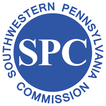|
Complete Streets
Complete Streets are streets designed and operated to enable safe use and support mobility for people of all ages and abilities, regardless of whether they are travelling as drivers, pedestrians, bicyclists or public transportation riders. A Complete Streets approach integrates people and place in the planning, design, construction, operation, and maintenance of our transportation networks. This helps to ensure streets are safe for people of all ages and abilities, balance the needs of different modes, and support local land uses, economies, cultures, and natural environments. Complete Streets / FHWA The U.S. Department of Transportation Federal Highway Administration (FHWA) is focused on supporting transportation agencies to plan, develop and operate equitable streets and networks that prioritize safety, comfort, and connectivity to destinations for all people who use the street network. Learn more about the FHWA's activities to advance Complete Streets. The National Complete Streets Coalition promotes the development and implementation of Complete Streets policies and professional practices. They provide numerous resources for communities interested in learning more about Complete Streets, including information on how to develop policies and implement Complete Streets projects. Interested in Complete Streets for
your community? Review the resources provided by the National Complete Streets Coalition, check out what other communities in the region are doing or send us a note and let us know how we can help!
|
Safe Streets, Smart Cities Academy City of Pittsburgh selected to participate in the Safe Streets, Smart Cities Academy November 2018 -Teams of planners, engineers, and law enforcement and public health officials from three cities convened in Huntsville, AL for the first workshop of the Safe Streets, Smart Cities Academy. "Launching the Safe Streets, Smart Cities Academy in the Rocket City" "Safe Streets, Smart Cities Academy takes its next steps in Durham" "Pittsburgh, PA demonstration project: Lincoln and Frankstown Avenues" Who is most impacted by traffic safety in the City of Pittsburgh? This web map, created by SPC staff, contains data from a variety of sources to address this question. Complete Streets for an Aging Population
Between 2012 and 2050, the United States will experience considerable growth in its older population. In 2050, the population aged 65 and over is projected to be 83.7 million, almost double its estimated population of 43.1 million in 2012. The baby boomers are largely responsible for this increase in the older population, as they began turning 65 in 2011. By 2050, the surviving baby boomers will be over the age of 85. (census.gov) As the nation ages, Complete Streets planning presents an opportunity to increase the safety and availability of older adults’ travel options. AARP developed a study to encourage transportation planners and decision-makers to build upon the principles of Complete Streets to address the specific needs of older drivers and pedestrians. |
Policy ordinance
City of Pittsburgh
In 2016, Pittsburgh's City Council unanimously passed a Complete Streets ordinance that calls for the development of a “safe and accessible multi-modal transportation system that will promote enhanced mobility for all users regardless of mode of travel, including people of all ages and abilities.”
Read the news article and/or see BikePGH's blog for a copy of the Executive Order.
In 2016, Pittsburgh's City Council unanimously passed a Complete Streets ordinance that calls for the development of a “safe and accessible multi-modal transportation system that will promote enhanced mobility for all users regardless of mode of travel, including people of all ages and abilities.”
Read the news article and/or see BikePGH's blog for a copy of the Executive Order.
policies / resolutions
- Dormont Borough / Complete Streets Policy, June 2023
- Municipality of Mt. Lebanon / Complete Streets Policy, November 2022
- Scottdale Borough / Complete Streets Policy, December 2020
- Smithton Borough / Complete Streets Resolution, November 2020
- Wilkins Township / Complete Streets Resolution, September 2019
- Borough of Etna / Complete Streets Resolution, September 2018
- Borough of Millvale / Complete Streets Resolution, September 2018
- The Congress of Neighboring Communities (CONNECT) passed a resolution in April 2015 laying out the intent of the Congress’ 38 communities to work towards a Complete Streets approach to transportation planning. Read more >

